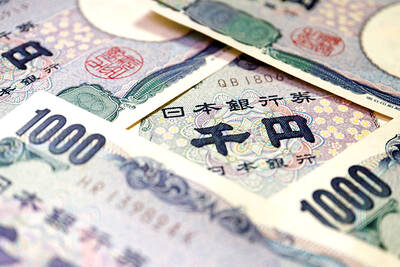Local banks yesterday launched joint mobile payment services based on QR code technology in a bid to tap the fast-growing financial technology (fintech) business and outcompete foreign payment tools.
“Taiwan Pay aims to provide more convenient, quicker payment services using QR code technology via smartphones, which have become a necessity in daily life,” Deputy Minister of Finance Su Jain-rong (蘇建榮) told a news conference.
Mobile payments are divided into two camps: one powered by near field communication (NFC) technology and the other using QR code technology, the ministry said.
The ministry spearheaded the development of Taiwan Pay to help the nation become a regional technology hub and to compete with Apple Pay, Samsung Pay and Android Pay.
Unlike foreign mobile payment tools that function like credit cards, Taiwan Pay can issue invoices and will allow users to pay taxes, utility bills and school fees in the near future, Su said.
The incompatibility of different foreign payment services has limited their growth and prevalence, although they have attracted more than 1 million customers since their entry into the local market in the second quarter of the year, he said.
Taiwan Pay hopes to attract 6 million users in its first year, given that it can be used on all smartphone models and brands, the deputy minister said.
Twelve Taiwanese financial institutions — including all eight state-run banks and Shanghai Commercial and Savings Bank (上海商業儲蓄銀行), Shin Kong Commercial Bank (新光銀行), Jih Sun International Commercial Bank (日盛銀行) and O-Bank (王道商業銀行) — are offering clients Taiwan Pay and another 13 are expected to join, Su said.
Community-level lenders, post offices and semi-official financial institutes are also expected to come on board.
“We expect all domestic banks to rally behind Taiwan Pay and aim to expand its reach overseas,” Su said.
Taiwan Pay is limited to debit card use, but is to add credit cards soon, he said.
“Taiwan Pay will gain rapid popularity as it requires low installation costs and guarantees safe transactions,” Hua Nan Financial Holding Co (華南金控) chairman Wu Tang-chieh (吳當傑) said.
Several retailers, bakeries, department stores and foundations have offered Taiwan Pay users discounts and gifts.

GROWING OWINGS: While Luxembourg and China swapped the top three spots, the US continued to be the largest exposure for Taiwan for the 41st consecutive quarter The US remained the largest debtor nation to Taiwan’s banking sector for the 41st consecutive quarter at the end of September, after local banks’ exposure to the US market rose more than 2 percent from three months earlier, the central bank said. Exposure to the US increased to US$198.896 billion, up US$4.026 billion, or 2.07 percent, from US$194.87 billion in the previous quarter, data released by the central bank showed on Friday. Of the increase, about US$1.4 billion came from banks’ investments in securitized products and interbank loans in the US, while another US$2.6 billion stemmed from trust assets, including mutual funds,

AI TALENT: No financial details were released about the deal, in which top Groq executives, including its CEO, would join Nvidia to help advance the technology Nvidia Corp has agreed to a licensing deal with artificial intelligence (AI) start-up Groq, furthering its investments in companies connected to the AI boom and gaining the right to add a new type of technology to its products. The world’s largest publicly traded company has paid for the right to use Groq’s technology and is to integrate its chip design into future products. Some of the start-up’s executives are leaving to join Nvidia to help with that effort, the companies said. Groq would continue as an independent company with a new chief executive, it said on Wednesday in a post on its Web

RESPONSE: The Japanese Ministry of Finance might have to intervene in the currency markets should the yen keep weakening toward the 160 level against the US dollar Japan’s chief currency official yesterday sent a warning on recent foreign exchange moves, after the yen weakened against the US dollar following Friday last week’s Bank of Japan (BOJ) decision. “We’re seeing one-directional, sudden moves especially after last week’s monetary policy meeting, so I’m deeply concerned,” Japanese Vice Finance Minister for International Affairs Atsushi Mimura told reporters. “We’d like to take appropriate responses against excessive moves.” The central bank on Friday raised its benchmark interest rate to the highest in 30 years, but Bank of Japan Governor Kazuo Ueda chose to keep his options open rather than bolster the yen,

Even as the US is embarked on a bitter rivalry with China over the deployment of artificial intelligence (AI), Chinese technology is quietly making inroads into the US market. Despite considerable geopolitical tensions, Chinese open-source AI models are winning over a growing number of programmers and companies in the US. These are different from the closed generative AI models that have become household names — ChatGPT-maker OpenAI or Google’s Gemini — whose inner workings are fiercely protected. In contrast, “open” models offered by many Chinese rivals, from Alibaba (阿里巴巴) to DeepSeek (深度求索), allow programmers to customize parts of the software to suit their